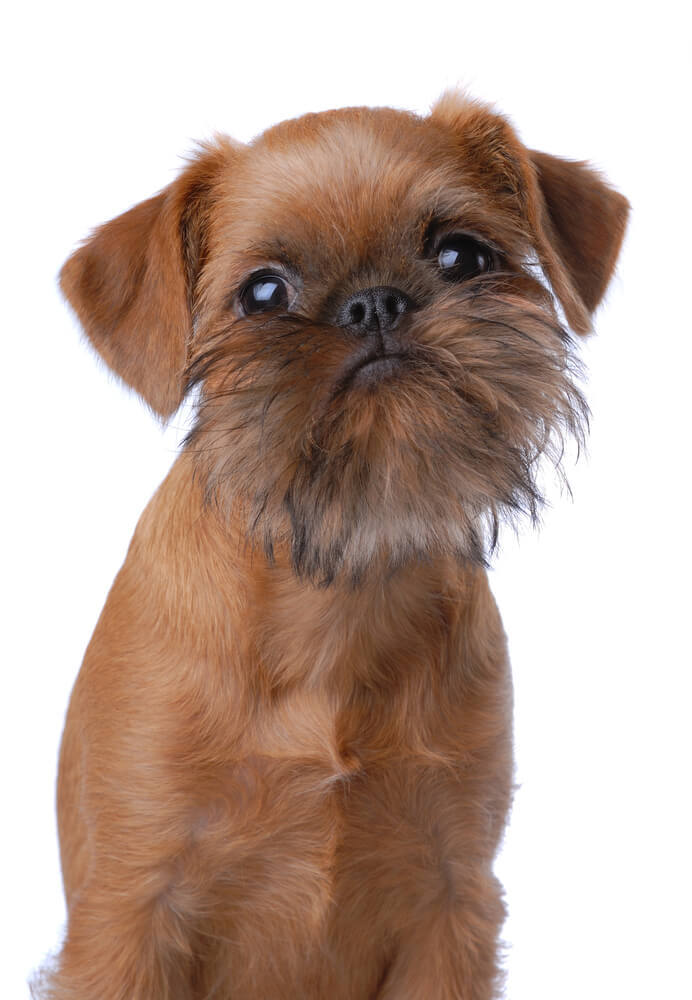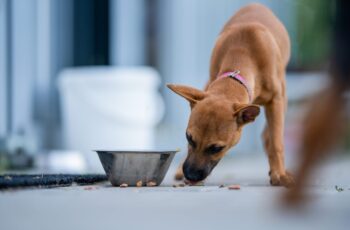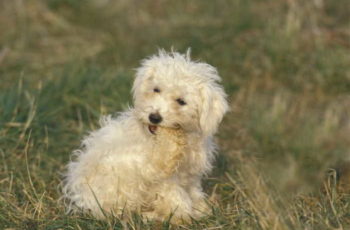There’s no such thing as a truly hypoallergenic dog. That being said, some breeds are less likely to cause reactions in allergic individuals. Individuals who experience red, itchy, watery eyes and nose, or a sore throat in the presence of other dogs might be just fine with a Brussels Griffon.
The Brussels Griffon is considered to be a great choice for allergy-sensitive dog owners and households and in particular the rough coat, because they shed very little and are small in size meaning less allergens are being produced.
With a short, curly coat and fair skin underneath, the smooth-coated Brussels Griffon sheds only twice a year (and needs only moderate grooming) compared to high-care, typically “allergenic” breeds. The rough coat does not have a seasonal shed.
The American Brussels Griffon Association advises that potential owners with allergies, check with an allergist before bringing a Griffon into the household to find out what triggers the allergic reaction. Even though there are dog products that may help reduce pet dander with the purpose of controlling allergic reactions, sensitivity usually grows with exposure.
What Makes the Brussels Griffon Hypoallergenic?
The Belgian Griffon is a toy-sized breed with medium energy and medium-maintenance requiring less grooming than fluffier or larger dog breeds.
Some of the attributes that help to make the Brussels Griffon a great hypoallergenic dog breed includes:
Their Shedding Schedule
High-allergenic dog breeds such as Labradors or Saint Bernards shed several times per year, or shed their heavy coat throughout the entire 365 days.
Hypoallergenic dog breeds like the Griffon have a lighter shedding schedule, and in the case of the smooth coated, they only throw off their coat twice a year (spring and fall). The rough coated doesn’t have a seasonal shed, however it does shed some.
With less of a yearly shed-rate than other dog breeds, the lack of spent fur all over the house reduces the chances that an allergy-sensitive owner will react to their Brussel Griffon.
Their Coat’s Composition
Unlike breeds with a thick, heavy coat of fur, the Griffon has medium-hair that is just a little lengthier than that of a Jack Russell.
The composition of their coat (and the density of their fur all over their bodies), means they simply have less hair to shed. Less shed hair means less pet dander in the environment.
The Brussels Griffon can be either smooth coated or rough coated and its coat can be found in several colors: solid black, solid red, black and tan and beige.
The smooth coated Brussels is generally short, smooth and straight with a coarse texture and right to the skin.
The rough coat is more denser with a wiry texture, a little longer with a full beard, mustache and bushy eyebrows.
The coat of the Brussels Griffon will also be less likely to trap dust, dirt and other allergens that can trigger an allergic reaction for a sensitive owner.
If you are sensitive to allergies, there’s almost no better hypoallergenic coat than the Brussels Griffon.

A smooth coated Brussels Griffon requires less grooming but has a seasonal shed. The rough coated Griffon does not have a seasonal shed but requires regular grooming.
Their Lessened Drooling
Some people are sensitive to dog fur, some to dog dander and some to saliva.
Allergens are not just something that you’ll find in your dog’s fur, but allergens are also present in their excretions (such as drool). We all know that some dog breeds just naturally drool more than others do – and lucky for pet owners, the Brussels Griffon is not on this list!
Thanks to the reduced amount of slobber, there’s less allergy-causing microcompounds that can set off allergies in pet owners.
Just one more reason why the Brussels Griffon is one of the first recommended breeds for people sensitive to allergic.
Their Skin Glands
Some dog breeds like the Shih Tzu can produce a lot more sweat between their skin and their coat, though the Brussels Griffon does not.
Even when they are put in warmer weather conditions, the Brussels Griffon does not produce a great deal of oils through their skin.
The lack of oil produced by the Brussels Griffon almost guarantees that you will have less problems with potential allergens and shed skin cells – and they have a smaller chance of developing skin conditions like rashes or dry skin.
Their Dander
Dander (scales of old skin that are constantly shed by an animal) is one of the most common allergens that a dog’s coat can produce, and usually shed all over the house. If you have any dog at all, you can almost surely know that their dander is in your carpets, curtains and elsewhere.
Lucky for pet owners, the Brussels Griffon sheds much less dander than others.
One key to keeping dander levels down is frequent grooming and bathing. Regular grooming and daily brushing keeps hair off furniture and floor.
That’s why they’re recommended as one of the best hypoallergenic breeds for households or families.
Tips for Living with a Brussel Griffon For Someone with Allergies
Even though they are a hypoallergenic breed with a lessened chance of allergic reactions, especially sensitive dog owners (and visitors!) – they can still have allergy symptoms around their Brussels Griffon breed dog.
If you are sensitive to allergies and notice heightened reactions around your Brussels Griffon, changes in their grooming routine and the best Omega-3 enriched diet you can afford could have a positive effect – and mean less allergies.
Here are tips for living with a Brussels Griffon in the house if you are very sensitive to dog allergies.
Regular Brushing
Brushing is one of the most important parts of your dog’s grooming routine. When you brush your dog all the way through, you help to get rid of the hair (and finer bits of fur) that they would normally shed on to your furniture or around the house.
Plus, most dogs love their regular brushing!
Grooming depends on the coat type of your Griffon. Smooth coated Brussels Griffon requires little grooming. Wiping down using a grooming mitt or a damp cloth is all that’s needed to give the coat gloss and catch the loose hairs.
According to the American Brussels Griffon Association, each hair in a rough coated Griffon grows between 3 and 4 inches, then dies off, replaced by a new hair.
To keep the house free of dog hair and it’s coat free of tangles – he requires frequent grooming and weekly brushing. Its coat also needs to be hand stripped by hand every few months using a stripping comb.
Bathe Your Dog Once (Or More) a Month
Bathe your dog at least once (or more) per month (or as needed) with a specialized shampoo that has been made for anti-shedding and the best enriched and healthy coat.
Brushing gets rid of loose fur, but not necessarily the dust and oils that are trapped in your dog’s fur. Brushing can also cause weaker hair to break, which can be strengthened with the best pet shampoo and diet.
With a bath, most of the potential allergens are stripped away from your dog’s skin and fur so that you are less likely to have an allergic reaction to the clean coat that remains.
Use an anti-shedding shampoo like Burt’s Bees Dog Control Shampoo.
Once you have brushed all the fur off your Brussels Griffon, have you ever wondered where the allergens and dust goes to settle down?
Most of the allergens that aren’t trapped on your dog’s skin or coat, will be floating around everywhere else. Couches, carpets and curtains are the worst allergen-trappers: if you have a dog, expect to vacuum your space more often.
A regular vacuum usually isn’t enough to pull fine allergens and fur out of carpets. Vacuum using a special Hoover MAXLife Pet Max Complete, Bagless… (available from Amazon) to guarantee the best allergen-free clean for your home.
Keep Your Dog Off Your Furniture
Dogs shed a lot of their skin and hair when they get up and off furniture, and even more when they sleep. If you have allergen-sensitive people in the home, it’s best not to share the home’s furniture with your dog.
Keep your dog off the furniture, unless you want to deep-clean the couch at the end of each day!
It doesn’t take a lot of effort, but only the best behavioral training. With an online pet school like Doggy Dan Online Dog Trainer, you can teach any dog new tricks – including “staying off the couch!”
Remember to teach others in the household to stick to the same rules!
Groom Your Dog Outside
For the best results, don’t groom your dog inside the house.
Grooming is a process best done outside, especially if you want to reduce the amount of allergens that are left around the home.
If shed fur and combed-out coat is left outside the house, you will have a reduced rate of potential allergens making their way around the house – and you are less likely to have an allergic reaction to your dog, even if you are particularly sensitive to it.


